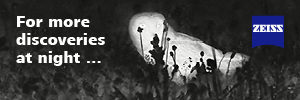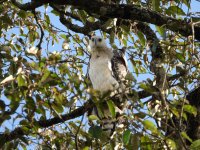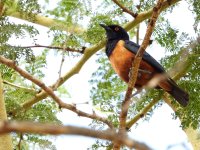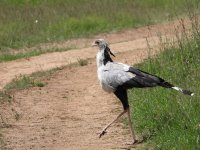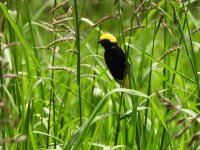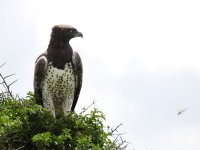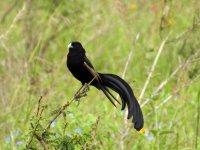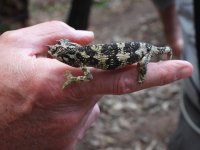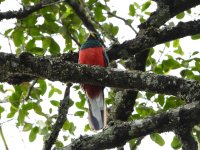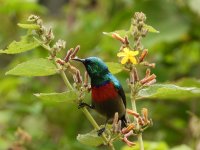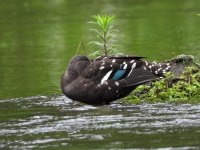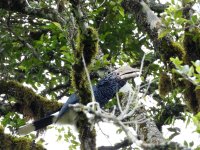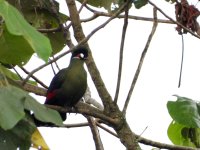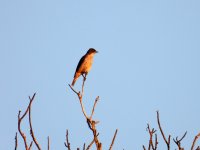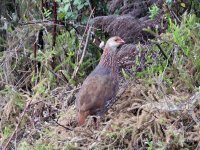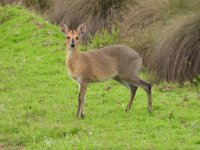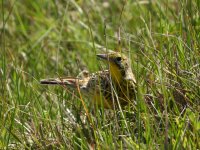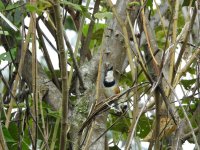lgonz1008
Well-known member

Kenya is well known and established as one of the best places left on earth to see many of the iconic megafauna of Africa, not just the Big-5, but also many other iconic species that we've seen in zoos and nature documentaries since we were old enough to remember. While I can say with confidence that this is definitely the case, I think this title has heavily damages the perception of how amazing this place is not just as an entry point to the amazing birdlife of Africa but also as one of the top 5 destinations in the continent to see it's many feathered inhabitants. The country list includes over 1,100 species of which 11 are country endemic and many more are regional endemics, add to that a policy of no active hunting any of the birds and you have a place where even in the "low season" you can see hundreds of species in point-blank views and get amazing shots!
The itinerary made sure we went through some of the most iconic parts of the country, including Mt. Kenya, Samburu, Kakamega Forest and the Masai Mara; but that doesn't mean the whole country was covered and it certainly makes the need to do another visit in the future for the areas missed. This trip was also my first experience as a proper guide on a multi-day trip and thankfully the adventurous nature lovers that joined me enjoyed the whole experience, from the amazing mammal sightings to having the opportunity of connecting with over 500 species of birds in the span of 2 weeks!
As usual for my trips, a local guide was used to ensure everything matched the needs of the group on the ground-level and we have to thank Alex Mwangi from Cisticola Birding, who was a very happy and hard-working birder and driver, he made sure nothing was behind the schedule and was good company throughout the trip, even putting up with my last moment requests to target certain species that were recently reported on eBird. If you ever contact Cisticola for a tour of Kenya, Alex is a safe bet for a good time and lots of time in the field.
However, I'm aware a lot of birders here like to do things on their own and my answer to that is, Kenya is pretty straightforward. If you can book your lodging in advance and manage to get a good manual vehicle with high clearance, the country is easy to get through, the bird ID is straightforward to the point that I could identify over 70% of the species seen without much knowledge of the calls and since most of the reserves are on set road with off-road driving being illegal. The only sites that there was a struggle was in the forested habitats like Mt. Kenya and Kakamega Forest, in true rainforest fashion, you had one trail and the birds were first located by call/preferred habitat, so having a local guide in such places helped a lot.
Detailed Itinerary:
The itinerary made sure we went through some of the most iconic parts of the country, including Mt. Kenya, Samburu, Kakamega Forest and the Masai Mara; but that doesn't mean the whole country was covered and it certainly makes the need to do another visit in the future for the areas missed. This trip was also my first experience as a proper guide on a multi-day trip and thankfully the adventurous nature lovers that joined me enjoyed the whole experience, from the amazing mammal sightings to having the opportunity of connecting with over 500 species of birds in the span of 2 weeks!
As usual for my trips, a local guide was used to ensure everything matched the needs of the group on the ground-level and we have to thank Alex Mwangi from Cisticola Birding, who was a very happy and hard-working birder and driver, he made sure nothing was behind the schedule and was good company throughout the trip, even putting up with my last moment requests to target certain species that were recently reported on eBird. If you ever contact Cisticola for a tour of Kenya, Alex is a safe bet for a good time and lots of time in the field.
However, I'm aware a lot of birders here like to do things on their own and my answer to that is, Kenya is pretty straightforward. If you can book your lodging in advance and manage to get a good manual vehicle with high clearance, the country is easy to get through, the bird ID is straightforward to the point that I could identify over 70% of the species seen without much knowledge of the calls and since most of the reserves are on set road with off-road driving being illegal. The only sites that there was a struggle was in the forested habitats like Mt. Kenya and Kakamega Forest, in true rainforest fashion, you had one trail and the birds were first located by call/preferred habitat, so having a local guide in such places helped a lot.
Detailed Itinerary:
- May 11-12 (Flights and arrival in Nairobi)
The trip began with an overnight flight to London, followed by a quick layover and arriving in Nairobi in the middle of the night. The flights didn't have much of note, but once in Kenya we were quickly greeted by the driver that would take us to our lodging for the following 2 nights, Wildebeest Eco Camp. After some quick check-in, everyone went to their tents for a good night's rest and at 1AM we were woken up by the mechanical and human scream-like noises of a Southern Tree Hyrax. The only mammal in our trip that remained heard-only, but deserved a special note because of the trauma it caused many in the group multiple nights of the trip.
- May 13 (Wildebeest Eco Camp and Ngong Forest Sanctuary)
Since this was the original arrival day of the trip, some of the participants made plans for the morning, leaving me and two fellow birders to go try and see as many species until the afternoon trip to the Ngong Forest Sanctuary. The lodge grounds provided us a good introduction to the birds of the region with some of the clear highlights being Dusky Turtle-Dove, Brown Parisoma and Holub's Golden-Weaver, among some more widespread species like Red-chested Cuckoo, African Black-headed Oriole, White-bellied Tit and Abyssinian Thrush. The morning birding provided us with good views of 45 different species.
After meeting with Alex in the early afternoon, we drove to the Ngong Forest Sanctuary, in hopes to connect some widespread but deeply sought-after species, including the local variety of White-headed (Brown-and-white) Barbet, a fledged Crowned Eagle, a calling male Narina Trogon, and a mixed flock that included Kikuyu White-eye, Amethyst Sunbird and a very surprising visitor in the form of Black-fronted Bushshrike. This last one was a big headache as the species has not been reported in Nairobi since the 1980's and unfortunately in the battle to identify the species, we missed on our chance to photograph this interesting, local rarity. Last highlight of the day was on the walk out of the forest as we came across a female Jackson's Chameleon crossing the road, with a naturalist in the group, the lizard was swiftly picked up and inspected much to the chagrin of the locals who saw the mzungus (Swahili for wanderer/white person) playing around with an animal usually linked with witchcraft and bad luck. This is something we couldn't understand as these are really cool reptiles, but each culture has their beliefs.
We arrived back at the hotel as the sun set and after a filling dinner and checklist, we went back to our tents in preparation for our first big day starting tomorrow in "The World's only Wildlife Capital" in Nairobi National Park.
Last edited:



